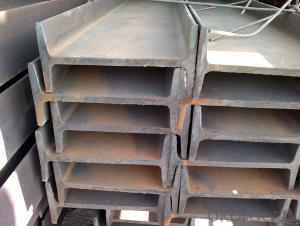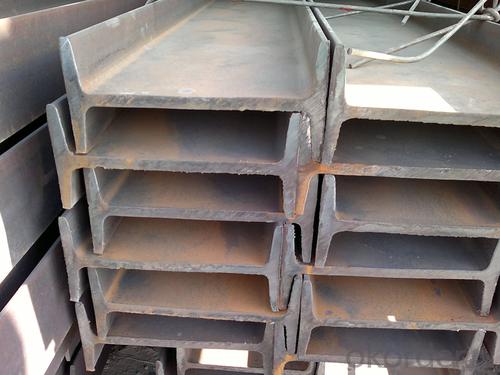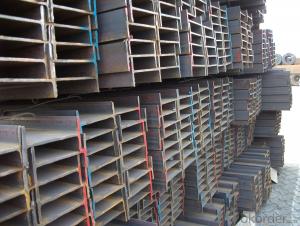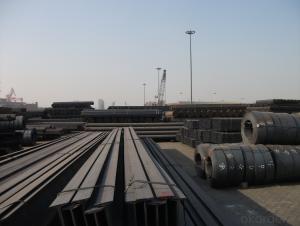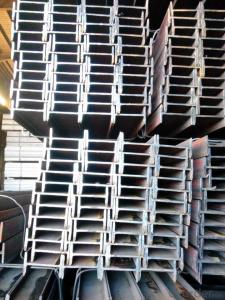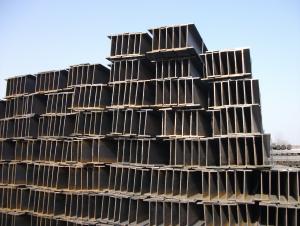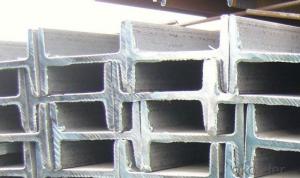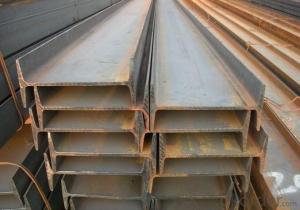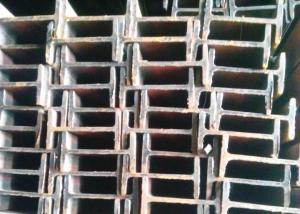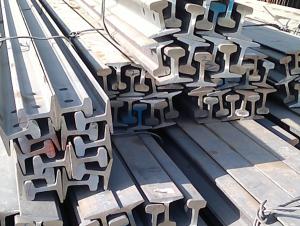IPE
- Loading Port:
- China Main Port
- Payment Terms:
- TT OR LC
- Min Order Qty:
- -
- Supply Capability:
- -
OKorder Service Pledge
OKorder Financial Service
You Might Also Like
Product Description:
IPE Beam Details:
| Minimum Order Quantity: | 10MT | Unit: | m.t. | Loading Port: | Tianjin Port, China |
| Supply Ability: | 10000MT | Payment Terms: | TT or LC |
Product Description:
Specifications of IPE Beam
1. Invoicing on theoretical weight or actual weight as customer request
2. Standard: EN10025, GB Standard, ASTM
3. Grade: Q235B, Q345B, SS400, ASTM A36, S235JR, S275JR
4. Length: 5.8M, 6M, 9M, 12M as following table
5. Sizes: 80mm-270mm
Dimensions(mm) | |||||
h | b | s | t | Mass Kg/m | |
IPE80 | 80 | 46 | 3.80 | 5.20 | 6.00 |
IPE100 | 100 | 55 | 4.10 | 5.70 | 8.10 |
IPE120 | 120 | 64 | 4.80 | 6.30 | 10.40 |
IPE140 | 140 | 73 | 4.70 | 6.90 | 12.90 |
IPE160 | 160 | 82 | 5.00 | 7.40 | 15.80 |
IPE180 | 180 | 91 | 5.30 | 8.00 | 18.80 |
IPE200 | 200 | 100 | 5.60 | 8.50 | 22.40 |
IPE220 | 220 | 110 | 5.90 | 9.20 | 26.20 |
IPE240 | 240 | 120 | 6.20 | 9.80 | 30.70 |
IPE270 | 270 | 135 | 6.60 | 10.20 | 36.10 |
Appications of IPE Beam
1. Supporting members, most commonly in the house raising industry to strengthen timber bears under houses. Transmission line towers, etc
2. Prefabricated structure
3. Medium scale bridges
4. It is widely used in various building structures and engineering structures such as roof beams, bridges, transmission towers, hoisting machinery and transport machinery, ships, industrial furnaces, reaction tower, container frame and warehouse etc.
Package & Delivery of IPE Beam
1. Packing: it is nude packed in bundles by steel wire rod
2. Bundle weight: not more than 3.5MT for bulk vessel; less than 3 MT for container load
3. Marks: Color marking: There will be color marking on both end of the bundle for the cargo delivered by bulk vessel. That makes it easily to distinguish at the destination port.
4. Tag mark: there will be tag mark tied up on the bundles. The information usually including supplier logo and name, product name, made in China, shipping marks and other information request by the customer.
If loading by container the marking is not needed, but we will prepare it as customer request.
5. Transportation: the goods are delivered by truck from mill to loading port, the maximum quantity can be loaded is around 40MTs by each truck. If the order quantity cannot reach the full truck loaded, the transportation cost per ton will be little higher than full load.
6. Delivery of IPE Beam: 30 days after getting L/C Original at sight or T/T in advance
Production flow of IPE Beam
Material prepare (billet) —heat up—rough rolling—precision rolling—cooling—packing—storage and transportation
- Q: Are steel I-beams resistant to pests, such as termites?
- Yes, steel I-beams are highly resistant to pests, including termites. Unlike wood, steel does not provide a food source for insects or other pests, making it an excellent choice for structural support in buildings.
- Q: How do steel I-beams handle vibrations?
- Steel I-beams are excellent at handling vibrations due to their inherent stiffness and strength. The rigid structure of I-beams allows them to effectively distribute and dissipate vibrations, minimizing their impact on the overall stability of a structure. Additionally, the high tensile strength of steel makes I-beams more resistant to deformation or failure under dynamic loading conditions, further enhancing their ability to handle vibrations.
- Q: How to calculate the weight of 250*175*10 I-beam?
- As steel is generally carbon steel, with a density of 7.8 tons / cubic meter, the unit length of weight: 0.0058*7.85*1000=45.53kg/m
- Q: Can steel I-beams be used in stadium construction?
- Yes, steel I-beams can be used in stadium construction. In fact, they are commonly used due to their strength, durability, and ability to support heavy loads over long spans.
- Q: Can steel I-beams be used in coastal areas?
- Indeed, coastal areas can indeed utilize steel I-beams. Steel, as a construction material, boasts durability and reliability, enabling it to endure the challenging conditions frequently encountered in coastal environments, such as strong winds, saltwater, and humidity. Nevertheless, it is crucial to carefully choose the suitable steel variant and employ protective coatings to avert corrosion. Stainless steel or galvanized steel are typically employed in coastal regions owing to their ability to resist rust and corrosion. Furthermore, consistent inspection and maintenance are imperative to guarantee the structural soundness of the steel I-beams utilized in coastal areas.
- Q: Can steel I-beams be used for pedestrian bridges or walkways?
- Indeed, pedestrian bridges or walkways can utilize steel I-beams. Given their robustness and ability to bear significant loads, steel I-beams are frequently employed in construction. Their capacity to sustain heavy weights renders them appropriate for pedestrian bridges. Furthermore, steel possesses durability, enabling it to endure diverse weather conditions and enjoy a prolonged lifespan. Consequently, steel I-beams can be tailored to meet the precise demands of pedestrian bridges or walkways, consequently guaranteeing safety and stability for pedestrians.
- Q: How do steel I-beams contribute to the overall energy efficiency of a structure?
- Steel I-beams contribute to the overall energy efficiency of a structure in several ways. Firstly, steel is a highly durable and long-lasting material, which means that structures built with steel I-beams require less maintenance and repairs over time. This leads to reduced energy consumption and costs associated with upkeep and renovation. Additionally, steel I-beams have excellent load-bearing capabilities, allowing for larger spans and open floor plans. This means that fewer beams are needed to support the structure, resulting in reduced material usage and, consequently, lower energy requirements during manufacturing and transportation. Moreover, steel is a highly recyclable material, and steel I-beams can be easily repurposed or recycled at the end of their lifespan. Recycling steel requires significantly less energy compared to the production of new steel, resulting in reduced energy consumption and greenhouse gas emissions. Furthermore, steel I-beams are often used in conjunction with other energy-efficient building components, such as insulated panels or double-glazed windows. This integration improves the overall thermal performance of the structure by reducing heat transfer, minimizing energy losses, and enhancing insulation. Lastly, steel I-beams can be designed to accommodate various energy-efficient systems, such as solar panels or geothermal heat pumps. These systems can be integrated into the structure, further reducing energy consumption by providing renewable energy sources or utilizing the earth's natural heat. Overall, steel I-beams contribute to the energy efficiency of a structure through their durability, load-bearing capabilities, recyclability, compatibility with energy-efficient components, and ability to accommodate sustainable technologies. By incorporating steel I-beams into the design and construction of a building, energy consumption, costs, and environmental impact can be significantly reduced.
- Q: How do steel I-beams perform in terms of sustainability?
- Steel I-beams are highly sustainable due to their durability, recyclability, and energy efficiency. They have a long lifespan, require minimal maintenance, and can be recycled at the end of their use. Furthermore, steel production processes have become more environmentally friendly, reducing emissions and energy consumption. As a result, steel I-beams are an excellent choice for sustainable construction and infrastructure projects.
- Q: Can steel I-beams be used for manufacturing plants?
- Indeed, manufacturing plants can utilize steel I-beams. These beams are extensively employed in the construction field owing to their remarkable strength-to-weight ratio and adaptability. They offer exceptional structural reinforcement, capable of enduring substantial burdens, which renders them perfect for deployment in manufacturing plants where heavy machinery and equipment are prevalent. Moreover, steel I-beams boast long-lasting sturdiness, as they are impervious to corrosion and capable of withstanding harsh environmental circumstances. Furthermore, their straightforward installation process and potential for customization to meet specific project demands contribute to their widespread popularity in manufacturing plants.
- Q: Can steel I-beams be used in aviation or aerospace construction?
- No, steel I-beams are not typically used in aviation or aerospace construction.
Send your message to us
IPE
- Loading Port:
- China Main Port
- Payment Terms:
- TT OR LC
- Min Order Qty:
- -
- Supply Capability:
- -
OKorder Service Pledge
OKorder Financial Service
Similar products
Hot products
Hot Searches
Related keywords
